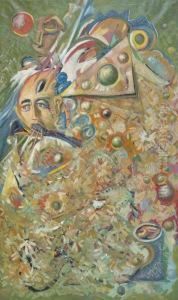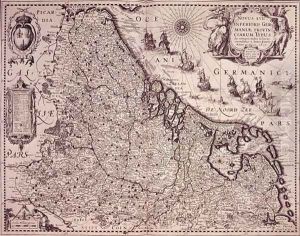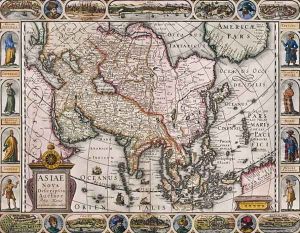Pieter van der Keere Paintings
Pieter van der Keere, also known as Petrus Kaerius, was a Dutch engraver, publisher, and cartographer active during the late 16th and early 17th centuries. Born around 1570, he was a contemporary of the more famous mapmakers Willem Blaeu and Jodocus Hondius. The exact details of his early life are somewhat unclear, but he was believed to have been born in Ghent, which was then part of the Spanish Netherlands (present-day Belgium).
Pieter van der Keere’s career was significantly influenced by the religious and political upheavals of his time, which included the Eighty Years' War (1568–1648) between the Dutch provinces and Spain. As a Protestant, van der Keere was likely compelled to flee the Southern Netherlands due to the Spanish Inquisition and the persecution of Protestants. He settled in London for a time, where he worked with the renowned cartographer Jodocus Hondius, who was also his brother-in-law.
In London, van der Keere began his career as an engraver and gained a reputation for his meticulous work. By 1599, he had moved to Amsterdam, which was becoming a center for cartography and publishing due to the Dutch Golden Age. There, he continued to work with Hondius and began producing his own maps and atlases. Van der Keere's works included miniature maps, which were popular at the time for their portability and use in personal atlases.
One of his notable contributions to cartography was a series of county maps of England and Wales, which he began in 1599. These maps were later published by John Speed in his atlas 'The Theatre of the Empire of Great Britaine'. Van der Keere's style was characterized by detailed and ornate cartographic representations, and he often incorporated elaborate decorative elements such as cartouches and heraldry into his maps.
Pieter van der Keere remained active in the field of cartography until his death around 1646. Although not as widely known as some of his contemporaries, his work had a lasting impact on the development of cartography in the early modern period. His maps and atlases continue to be valued for their historical significance and craftsmanship.


